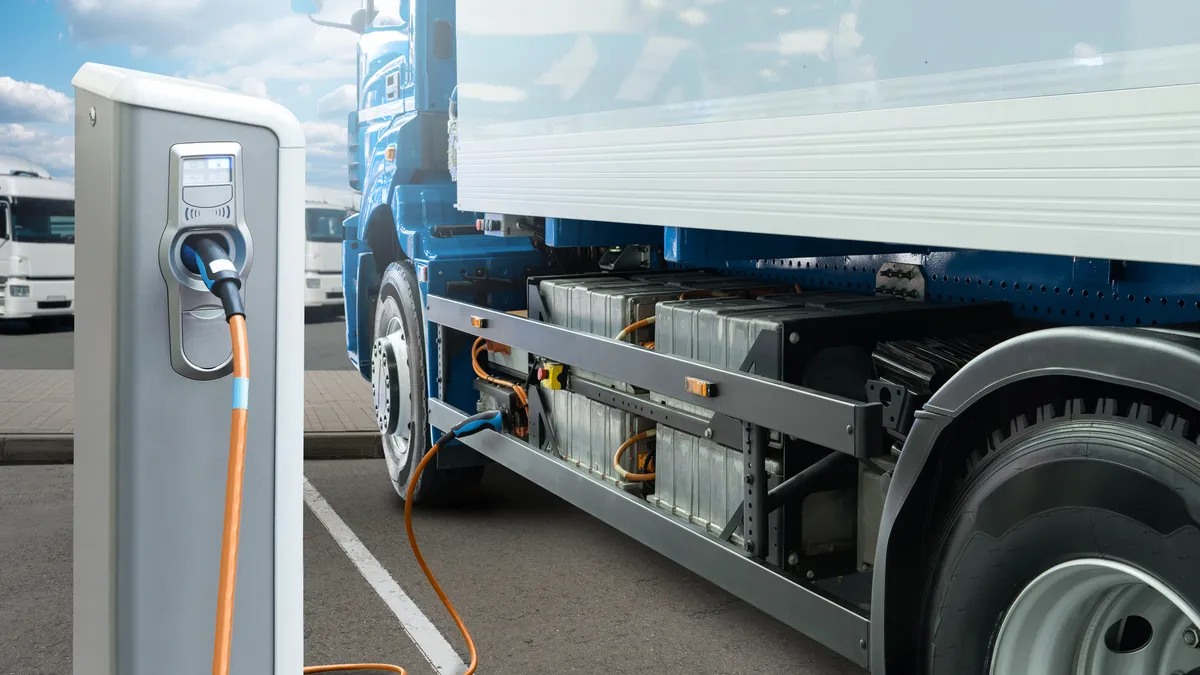Dive Brief:
- The total cost of ownership of electric trucks is declining and in some instances may already be cheaper than gas or diesel options, but federal policies and incentives are still required to encourage a “wholesale shift,” public policy think tank Third Way said in a June 28 memo.
- The trucking industry is wary that electric versions are “not cheap enough,” Third Way concluded. If additional upfront costs can be recouped within five years, companies that buy trucks will make the switch more quickly, the group said.
- Policies proposed by Third Way to reduce total cost of ownership include suspension of federal excise taxes on zero-emission trucks, tax credits for the manufacture and purchase of the trucks, and additional funding for the U.S. Department of Energy’s Loan Programs Office.
Dive Insight:
There are 52 plants in the U.S. that currently assemble medium- and heavy-duty trucks, and of those, 42 are either already producing zero-emission trucks or are planning to by 2025, according to Third Way’s memo.
The group has also published an interactive map showing where the trucks are produced.
“The US trucking industry is inching toward the production of zero-emission medium- and heavy-duty trucks,” according to the memo. “Fleet businesses will swap out gasoline and diesel trucks when the price and cost fit their balance sheets.”
Meanwhile, production of these zero-emission vehicles was currently low, totaling 3,000 trucks last year, the memo reported.
The group suggested federal policies are needed to advance adoption of heavy-duty trucking. The transportation sector is vital to decarbonization, say experts, and trucking will play a major role.
Medium- and heavy-duty vehicles represented only 6% of registered U.S. vehicles in 2018, according to the Electrification Coalition, but were responsible for more than a quarter of the nation’s transportation sector fuel consumption and 23% of the sector’s greenhouse gas emissions.
Medium- and heavy-duty trucks “have only recently begun to receive attention from the industry and policy makers,” the Electrification Coalition said in its 2020 report on electrifying freight. “While the electrification of freight vehicles is very promising, not every vehicle type may be presently suited for electrification,” the group said. However, “while some of the solutions from the light-duty sector can be adopted for use ... the technology is quickly evolving.”
In New York, a coalition of customer and conservation groups has asked regulators to begin considering issues surrounding medium- and heavy-duty electric vehicles. So far, the state’s efforts have focused on light-duty vehicles.
The Fuels Institute warned in an April report that, compared with passenger vehicles, designing policies to encourage electric freight is “vastly more complex” due to the diversity of vehicle types and sizes.
Third Way’s memo calls for Congress to provide $300 million in credit subsidies for DOE’s Advanced Technology Vehicle Manufacturing loan program to support companies investing in facilities to manufacture clean trucks. It also recommends eliminating a 12% excise tax on the purchase of new zero-emission trucks, tax credits for manufacturing or purchasing the trucks, and increasing support for clean truck manufacturing through the 48C Advanced Manufacturing Tax Credit.
Furthermore, the cost of trucks, which can range from $90,000 to $230,000, can have sticker prices increase by 30% for zero-emission alternatives, and supply chain bottlenecks can further increase costs, according to the memo.
“While the total cost of ownership looks very favorable for zero-emission trucks ... the capital costs of moving toward electric also entail running down these old units to a point where the switch makes economic sense,” Third Way noted. “That is where policy incentives come in.”
David Taube contributed to this report.














